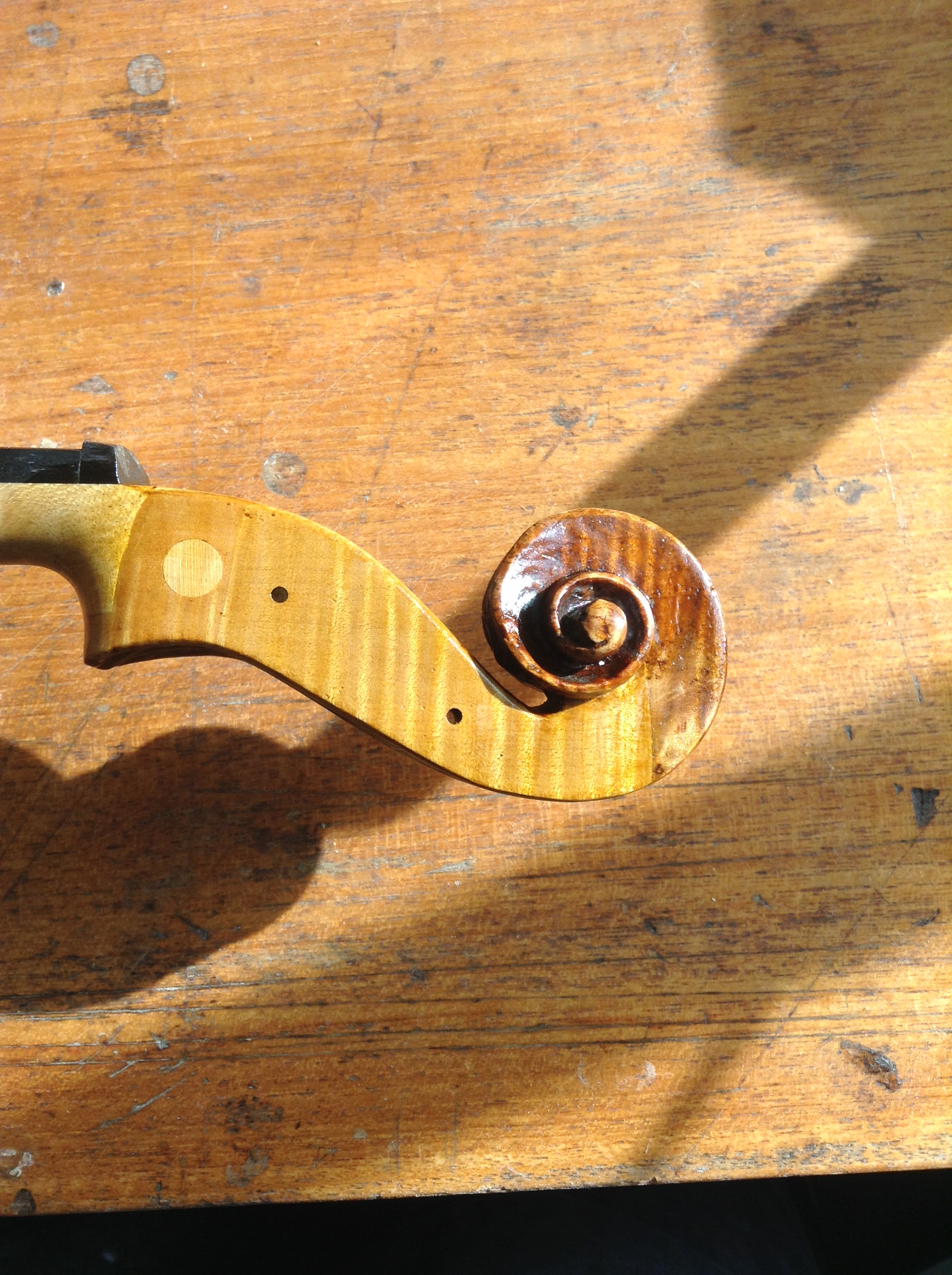Over the last twenty years working for both dealers, auction houses and professional musicians, I have been able to work on some of the very finest instruments. Very often instruments need only minor adjustments to improve their sound or playability, and all restoration work is carried out according to the fundamental principles of conservation, that is, the preservation of as much original material as possible.
As wonderful as it is to work on these incredible instruments, my greatest pleasure comes from establishing long term professional relationships with my clients, which enables me to tailor the services I provide to their specific needs.
The Ethics of Violin Restoration
The conservation – where possible – of original material is the single most important factor in violin restoration.
Unfortunately this ethos if often not carried out in practice, and many fine instruments have suffered at the hands of overzealous restorers. Such damage is not always the fault purely of the restorer, but also the pressures put on them by players and owners.
It is therefore essential that any work carried out is a collaborative effort and all parties are aware not just of the potential costs and timeframe, but also how invasive the restoration may be and whether, for example, a compromise in some structural strength might be preferable to replacing original wood for a patch.
Here is an example (above) of an instrument of quality that came through the workshop with untouched and pristine varnish.
In the past it was often felt appropriate to cover original varnish with a coating of French polish, thus providing a protective barrier. It also allowed the restorer to blend their varnish work with the original, or more accurately, to blend the original varnish with their own.
From this example of pristine original varnish we can get an idea not only of the beautiful depth of colour, but also the complexity of the surface texture. In this instance, although it is always preferable for the crack to be invisible, it should never be done so at the expense of the original texture.
Case study No.1 – Soundpost CRACK REPAIR
The photos above show a soundpost crack reinforced with studs only (very often this type of crack will be patched).
The client played a significant role in this repair, by having the crack glued immediately after the accident, and by deciding not to go ahead with a patch, given the otherwise pristine condition of the instrument.
Gluing the crack as soon as possible made it far easier to produce an invisible joint, as no cleaning and minimal varnish work was required. Although a patch provides for much stronger reinforcement, it is still possible for the crack to reopen over time, something I have seen many times with old restorations.
CASE STUDY NO.1 – RESTORATION OF A PEGBOX BY DALL'AGLIO
In the following repair the violin had the great misfortune to have been repaired by a rank amateur.
My client asked for the original, unsightly pegbox reinforcements to be removed, and replaced with something more suitable. The patches were removed and the original crack, which ran through both sides and the back of the pegbox, was opened up, cleaned, and re-glued. Once this was done the pegbox was reinforced with dental compound, the patch area cleaned up and prepared for new wood. In this case Oppio was used. It took some weeks (and a number of pieces that weren't quite up to scratch) to find wood that perfectly matched the scroll.
The wood was then aged and varnished to match the original.
Tonal adjustments
As well as providing a service evaluating the condition of instruments, much of my time is taken up with tonal adjustments. It is essential if this process is to be successful to build a strong relationship with a client and familiarise myself not only with them, but also their instrument. I see this very much as a collaborative process.

























